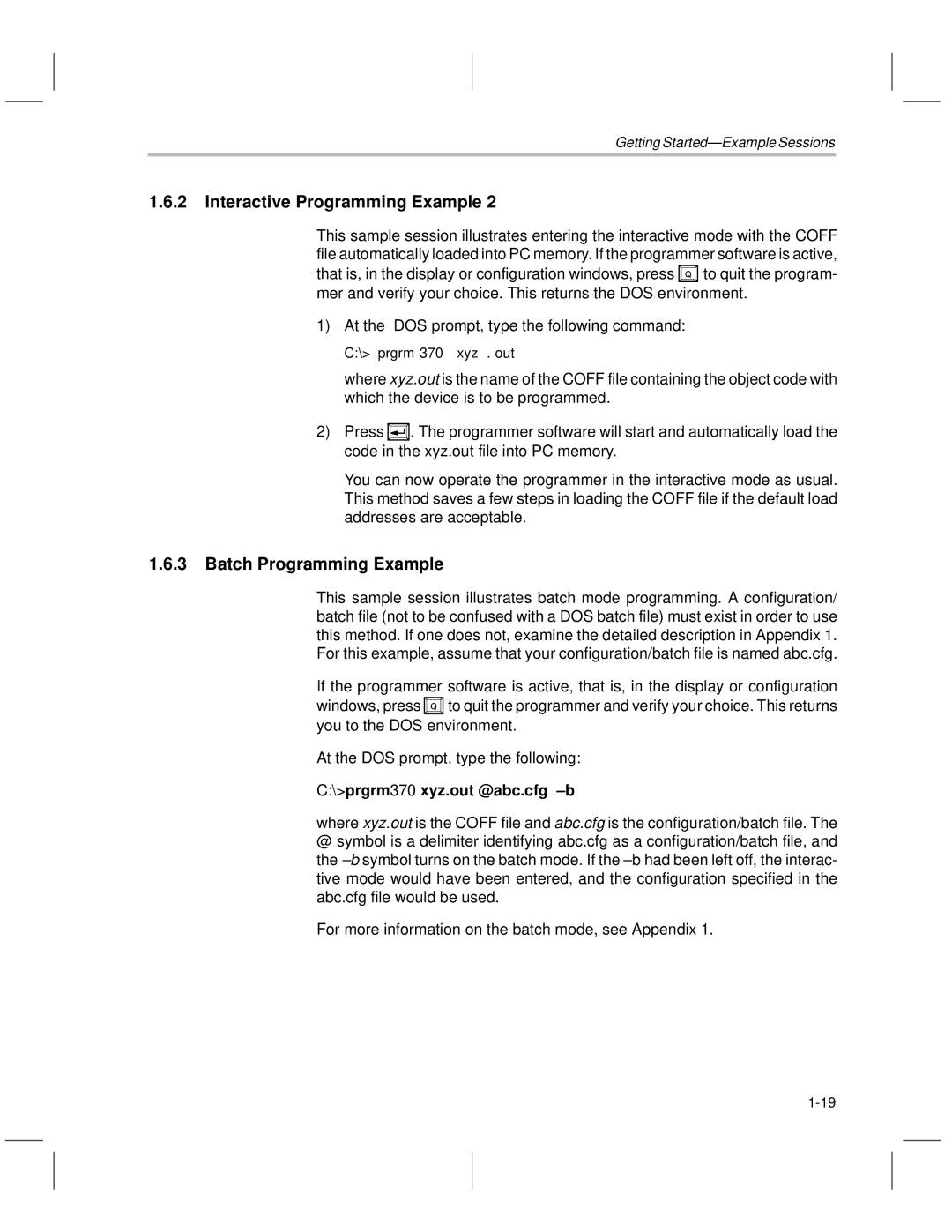
Getting StartedÐExample Sessions
1.6.2Interactive Programming Example 2
This sample session illustrates entering the interactive mode with the COFF file automatically loaded into PC memory. If the programmer software is active, that is, in the display or configuration windows, press ![]() to quit the program- mer and verify your choice. This returns the DOS environment.
to quit the program- mer and verify your choice. This returns the DOS environment.
1)At the DOS prompt, type the following command:
C:\>prgrm370 xyz.out
where xyz.out is the name of the COFF file containing the object code with which the device is to be programmed.
2)Press ![]() . The programmer software will start and automatically load the code in the xyz.out file into PC memory.
. The programmer software will start and automatically load the code in the xyz.out file into PC memory.
You can now operate the programmer in the interactive mode as usual. This method saves a few steps in loading the COFF file if the default load addresses are acceptable.
1.6.3Batch Programming Example
This sample session illustrates batch mode programming. A configuration/ batch file (not to be confused with a DOS batch file) must exist in order to use this method. If one does not, examine the detailed description in Appendix 1. For this example, assume that your configuration/batch file is named abc.cfg.
If the programmer software is active, that is, in the display or configuration windows, press ![]() to quit the programmer and verify your choice. This returns you to the DOS environment.
to quit the programmer and verify your choice. This returns you to the DOS environment.
At the DOS prompt, type the following:
C:\>prgrm370 xyz.out @abc.cfg ±b
where xyz.out is the COFF file and abc.cfg is the configuration/batch file. The
@symbol is a delimiter identifying abc.cfg as a configuration/batch file, and the ±b symbol turns on the batch mode. If the ±b had been left off, the interac- tive mode would have been entered, and the configuration specified in the abc.cfg file would be used.
For more information on the batch mode, see Appendix 1.
